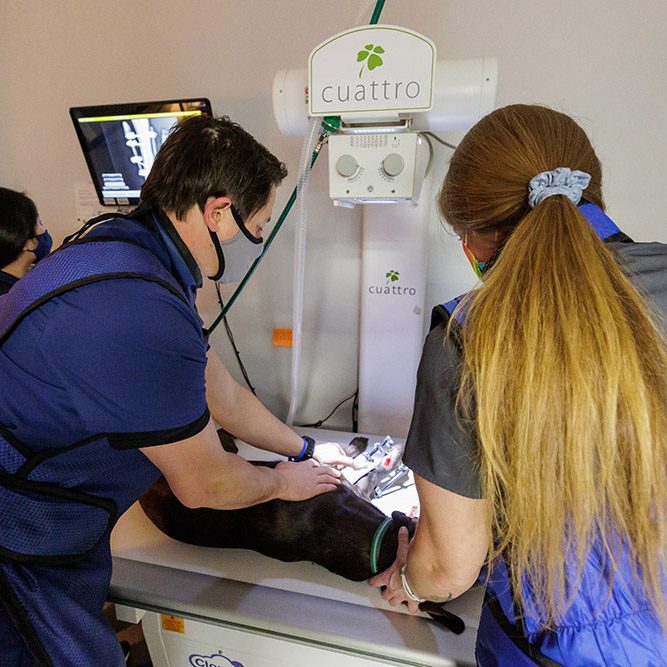A Pet Owner’s Guide to the Cost and Purpose of CT Scans For Animals}
The Duty of Ultrasound and CT Check in Modern Veterinary Practices: Insights From Experienced Professionals
In modern-day vet methods, ultrasound and CT scans considerably improve analysis abilities. These imaging strategies supply vital understandings right into animal wellness, guiding therapy choices. Experienced specialists recognize the distinct advantages of each method. Ultrasound offers real-time assessments, while CT scans provide elaborate physiological information. Recognizing their applications and functions elevates crucial concerns about their effect on person end results and the future of vet diagnostics. What understandings can be obtained from their incorporated usage?
Understanding Ultrasound in Vet Medication
Ultrasound is a necessary analysis tool in veterinary medicine, providing a non-invasive method to visualize interior structures. This imaging method employs high-frequency acoustic waves to produce real-time pictures of tissues and organs, enabling veterinarians to evaluate conditions without medical intervention. Typical applications include examining the heart, liver, kidneys, and reproductive body organs, along with checking pregnancies.The procedure is fairly fast and can be executed in various setups, making it an easily accessible choice for veterinarians. Unlike radiography, ultrasound provides comprehensive information about soft tissues and blood flow, which is crucial for precise diagnoses.Veterinary professionals depend on ultrasound to discover problems such as growths, cysts, and fluid accumulation. Its capacity to assist biopsies and various other treatments further improves its energy in scientific practice. By using a reliable and secure way to check out inner anatomy, ultrasound has come to be a cornerstone of contemporary vet diagnostics.
The Benefits of CT Scans for Pet Diagnostics
CT checks offer considerable advantages in veterinary diagnostics by giving enhanced precision in recognizing internal problems (CT Scans For Dogs). As a non-invasive imaging method, they ensure the security and convenience of animals throughout examinations. Additionally, CT scans help with a complete assessment of inner frameworks, permitting more efficient treatment preparation
Boosted Diagnostic Precision
Improvements in imaging modern technology have substantially enhanced analysis accuracy in veterinary medication, specifically with the usage of CT scans. These scans supply thorough cross-sectional pictures of a pet's inner frameworks, permitting vets to determine abnormalities with accuracy. The high resolution and three-dimensional capabilities of CT imaging help with the discovery of conditions such as growths, cracks, and interior bleeding that could be missed with traditional imaging techniques. In addition, CT scans can assist in pre-surgical preparation by supplying a complete sight of physiological partnerships. This degree of information not just boosts the precision of medical diagnoses however additionally aids in tailoring effective treatment strategies. Subsequently, the integration of CT technology right into vet practices is changing the landscape of pet healthcare, boosting end results for patients.
Non-Invasive Imaging Technique
The introduction of non-invasive imaging techniques has actually revolutionized pet diagnostics, with CT scans becoming a prominent device in veterinary methods. These scans supply high-resolution, cross-sectional photos of an animal's inner structures, permitting veterinarians to assess complex conditions without the demand for intrusive treatments. The benefits of CT scans include their capacity to find lumps, fractures, and inner blood loss with amazing precision. In addition, they promote the evaluation of soft cells and body organs, enhancing analysis abilities. The rate of CT scanning enables fast decision-making, which is crucial in emergency situation scenarios. By reducing stress and discomfort for the pet, CT scans add to a much more humane approach to diagnostics, inevitably enhancing treatment results and progressing veterinary treatment.
Comprehensive Internal Evaluation
An extensive inner evaluation is necessary for exact diagnosis and effective therapy in vet medication. CT scans offer substantial benefits in this respect, offering comprehensive cross-sectional images of an animal's internal structures. This innovative imaging modality boosts visualization of intricate anatomical areas, enabling vets to identify irregularities such as tumors, cracks, and inner bleeding with greater precision. Furthermore, CT checks assist in the assessment of problems that may be testing to detect with typical techniques. The speed and precision of CT imaging also add to timely interventions, improving client results. As vet methods significantly incorporate CT technology, the benefits of considerable inner evaluations come to be noticeable, reinforcing the significance of this tool in modern vet diagnostics.
Comparing Ultrasound and CT Imaging Techniques
While both ultrasound and CT imaging serve essential duties in vet diagnostics, each strategy supplies distinctive advantages and limitations that can influence scientific decision-making. Ultrasound is especially valued for its real-time imaging abilities, enabling veterinarians to observe dynamic physical processes. This strategy is non-invasive, portable, and does not include ionizing radiation, making it a more secure choice for both medical professionals and pets. Ultrasound may have restrictions in imagining specific anatomical structures or deep tissues.Conversely, CT imaging supplies comprehensive cross-sectional visit this site right here sights of the body, enabling for precise localization of abnormalities. It masters evaluating complex organs and structures, specifically in the thorax and abdomen. CT scans call for sedation or anesthesia in numerous situations and involve direct exposure to ionizing radiation. Ultimately, the choice in between ultrasound and CT depends on the particular professional circumstance, the location of interest, and the urgency of the diagnostic requirements.
Case Studies: Successful Medical Diagnoses With Imaging
Instance studies highlight the substantial renovations in analysis precision achieved with advanced imaging technologies like ultrasound and CT scans in veterinary practices. These improvements not only enhance the discovery of various problems yet also facilitate timely and efficient therapy strategies. Assessing certain cases can highlight the transformative influence of these imaging strategies on veterinary medicine.
Analysis Accuracy Improvements

Imaging Innovation Advancements
As veterinary imaging technology remains Find Out More to evolve, its effect on analysis capabilities ends up being significantly apparent. Current instance studies highlight the successful application of innovative ultrasound and CT check techniques in determining intricate conditions. A vet center utilized high-resolution CT scans to identify a rare form of lung cancer in a pet dog, which conventional imaging had missed out on. An ultrasound evaluation exposed a stomach mass in a cat, prompting timely surgical treatment and a favorable outcome. These advancements not just boost diagnostic precision but also allow veterinarians to devise targeted treatment plans. By leveraging innovative imaging technologies, vet professionals are considerably boosting individual treatment, causing much more efficient monitoring of different health and wellness problems in pets.
The Role of Imaging in Emergency Veterinary Treatment
Imaging plays an essential role in emergency vet care, giving vets with crucial information required to make fast, enlightened choices. In urgent situations, methods like ultrasound and CT scans enable specialists to swiftly analyze a pet dog's internal structures, determining essential problems such as inner blood loss, fractures, or body organ abnormalities. These imaging methods permit real-time evaluations, facilitating prompt treatments that can be life-saving. For example, ultrasound is very useful for examining soft cells injuries and conditions like fluid accumulation, while CT checks deal in-depth photos of complicated anatomical structures, crucial for diagnosing trauma situations. The speed and accuracy of these imaging techniques boost the vet's ability to devise effective treatment plans, guaranteeing the most effective feasible outcomes for their patients. The combination of innovative imaging modern technologies right into emergency situation veterinary practices is not just valuable however significantly needed, as it improves analysis abilities and improves overall pet care throughout critical minutes.

Training and Proficiency in Vet Imaging
Sophisticated imaging strategies such as ultrasound and CT scans are important for efficient vet treatment, the successful application of these technologies heavily depends on the training and experience of veterinary specialists. Competent use imaging tools needs complete expertise of anatomy, pathology, and the principles underlying each technique. Vet specialists must undergo specific training to properly analyze imaging outcomes, which is vital for identifying problems and intending treatment.Certifications and continuing education in vet imaging improve the abilities of specialists, enabling them to remain upgraded with technological improvements. Collaboration in between vets and radiologists commonly leads to improved analysis precision, as specialists can offer insights into complex cases. On top of that, practical experience in handling imaging equipment fosters self-confidence in its application. Inevitably, the top quality of vet imaging services is directly associated to the degree of training and expertise had by the specialists using these necessary diagnostic tools.
Future Trends in Diagnostic Imaging for Animals
With the quick innovations in modern technology, vet analysis imaging is positioned for considerable development in the coming years. Arising trends suggest a change in the direction of more portable and accessible imaging techniques, such as portable ultrasound devices, which could enhance field diagnostics. Furthermore, the integration of expert system is anticipated to change picture evaluation, permitting for quicker and more exact interpretations of results.Moreover, developments in 3D imaging strategies and calculated tomography will give veterinarians with even more detailed views of pet makeup, resulting in improved therapy strategies. Digital truth modern technology might additionally play a duty in medical preparation and education, giving vets an unique perspective on complex cases.As telemedicine remains to expand, remote assessments assisted in by diagnostic imaging will certainly come to be much this contact form more usual, allowing experts to aid family doctors in real-time. Overall, these trends are established to boost the efficiency and efficiency of vet treatment, ultimately boosting pet results.
Regularly Asked Inquiries
Exactly How Much Do Ultrasound and CT Checks Price in Veterinary Clinics?
The expenses of ultrasound and CT scans in vet facilities normally range from $300 to $1,500, relying on factors such as place, facility type, and particular treatments required for the animal's diagnosis and therapy.

Are There Any Threats Related To Ultrasound and CT Scans for Pet Dogs?
Ultrasound and CT scans normally position marginal dangers to family pets. Nonetheless, prospective concerns consist of sedation reactions and direct exposure to anesthetics. CT Scans For Dogs. Veterinarians carefully examine each case to alleviate any dangers connected with these analysis treatments
The Length Of Time Do Ultrasound and CT Procedures Generally Take?
Ultrasound treatments generally take around half an hour to an hour, relying on the complexity. CT scans, being even more comprehensive, generally require half an hour to 90 minutes, consisting of preparation and healing time for the pet.
Can All Veterinarians Perform Ultrasounds and CT Scans?
Not all veterinarians can execute ultrasounds and CT scans. Specialized training and certification are usually required to ensure expertise in these advanced imaging methods, which might limit their availability to vets with added qualifications and sources.
What Kinds of Pets Benefit Many From These Imaging Techniques?
Particular pet species, specifically dogs and cats, advantage greatly from ultrasound and CT scans. These imaging techniques enhance diagnostic accuracy for conditions like growths, interior injuries, and organ irregularities, bring about better therapy outcomes and patient care. The high resolution and three-dimensional capabilities of CT imaging help with the detection of conditions such as growths, fractures, and interior bleeding that might be missed with conventional imaging methods. Situation research studies highlight the substantial renovations in analysis precision attained via innovative imaging modern technologies like ultrasound and CT scans in vet techniques. Improving diagnostic accuracy in veterinary practices has been considerably aided by improvements in imaging innovations such as ultrasound and CT scans. Innovative imaging strategies such as ultrasound and CT scans are crucial for efficient veterinary care, the successful implementation of these technologies heavily depends on the training and know-how of veterinary experts. Veterinary professionals must undergo specialized training to properly analyze imaging outcomes, which is vital for diagnosing problems and preparing treatment.Certifications and continuing education and learning in vet imaging improve the skills of practitioners, allowing them to stay upgraded with technological advancements.